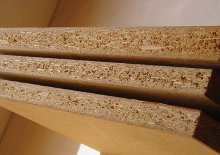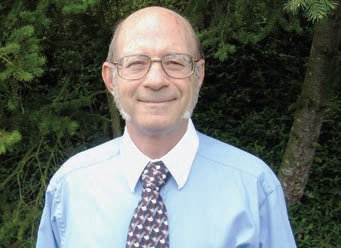Formaldehyde futures
31 March 2015Developments in US regulations governing formaldehyde emissions have been a hot topic in the wood based panel industry, but uncertainty over potential state and federal legislation remains. Our correspondent Robin Meade talks to David Harmon of Momentive Specialty Chemicals.
Amendments to the California Air Resources Board (CARB) standards on emissions from composite wood products are due to be completed in 2016, but progress on federal implementation rules anticipated for the beginning of this year have yet to materialise.
Panel manufacturers have steadily reduced the formaldehyde emissions from their products to very low levels, with some have investing in substitute binders, such as soya-based formulations, with the added benefit of boosting their green credentials.
But wider regulation is now being considered, including an extension to include end-use manufactured products.
David Harmon, technical manager of Momentive Specialty Chemicals, said he believes further emissions regulations on wood based products, including finished products, was a certainty, but it was unclear how the dust would settle.
"The industry would prefer finished products not to be primary regulation objects because there are so many that would have to go through testing. There are 1,000 potential subjects for raw product certification, but tens or even hundreds of thousands for finished products.
"It would be idealistic to test every item for everything, but it is not a practical thing. From the consumer's point of view, they will have to foot the bill. At this point it is all unknown," he said.
Measures on controlling formaldehyde emissions from composite wood products were introduced by the California Air Resources Board (CARB) seven years ago, with the amendment process in co-operation with the federal Environment Protection Agency (EPA) beginning in 2011, with a completion target of 2016.
Federal harmonisation of the CARB approach across the US would prevent a range of state regulations, but the Green Chemistry Initiative has encouraged around half the states to put forward their own legislation. Mr Harmon is bullish about harmonisation and he hopes the efforts being made in California will become the standard.
"I believe California, through CARB, is working very hard with EPA staff to eliminate any differences in their approaches that will come out of the current process. That being said, the EPA regulations do not supersede any state regulations, so the potential does exist for variations.
"Many states are looking at standing back to see what the outcome is between California and the EPA before they go in any particular direction. Certainly from the industry there is every hope from a practical sense that the regulations are consistent across the country to the point that they do not have to respond to obtuse differences."
Mr Harmon is also confident about the advances made in alternative resins to reduce formaldehyde emissions, which he describes as a step change, even though the commercial issues remain.
"The overall response to adhesives and binders from the resin producers has produced strides in all types, from UF to bio-based.
"There has been innovation but it gets down to the market deciding the technology, or combination of technologies, that provide the best for quality and price. Some of the resin systems are capable of being used to make a product that emits at or near levels of natural wood, be it soya or tannins, but they are all coming down to near natural wood and that has been a true advance."
He is concerned that future regulation and rules would take the product to an unnecessarily low level, where demands for continued improvements in emissions would provide no additional or practical health benefits.
"In general, with current technology and products, and what the industry has in development and what is starting to be developed, we are very near Mother Nature's level. From a practical point of view, formaldehyde is produced by every living thing and there is nothing we can do about that - it is a bi-product of living and to try to get lower than that - natural wood, I don't think we are going to get there," he said.
There is no indication of when the regulatory process will be complete. The EPA and CARB have their own processes and they are talking to interested parties and the federal draft is subject to a financial impact study and inter-departmental review.
"I am encouraged that some additional time is going into getting comments and the preparation of this. Is it going to be perfect when it comes out? Sometimes the best compromise is the best outcome. At the end of the day, the consumer must be satisfied," he said.

